
Delhi: A Cultural and Historical Tapestry
Discover Delhi: A city where history meets modernity, offering a rich tapestry of cultural experiences, diverse cuisine, and vibrant arts and crafts.
Delhi, the capital city of India, is an incredible blend of the old and the new. From ancient monuments to bustling markets, and modern skyscrapers, Delhi offers a rich cultural experience. The city is a treasure trove of history, with landmarks like the Red Fort, Qutub Minar, and India Gate standing as witnesses to its glorious past. The narrow lanes of Old Delhi, with its historic Chandni Chowk market, contrast sharply with the wide roads and modern architecture of New Delhi. Delhi is also a paradise for food lovers. With its diverse culinary scene, you can savor traditional Indian dishes like butter chicken and chole bhature, as well as street food like golgappas and jalebis. The city is home to several UNESCO World Heritage sites, including Humayun's Tomb and the Lotus Temple, making it a haven for history buffs. The vibrant arts and crafts scene in Delhi is another highlight. You can explore various art galleries, craft markets, and cultural festivals that showcase the rich heritage of India. The city also boasts lush green parks like Lodhi Gardens and the sprawling complex of the Akshardham Temple, offering peaceful retreats amidst the urban chaos. Delhi's nightlife is lively, with numerous bars, clubs, and restaurants offering a variety of entertainment options. Whether you're interested in shopping, dining, sightseeing, or simply soaking in the atmosphere, Delhi has something for everyone.
Local tips in Delhi
- Visit early in the morning to avoid the crowds at popular tourist spots like the Red Fort and Qutub Minar.
- Use the Delhi Metro for a convenient and affordable way to travel around the city.
- Try street food in Old Delhi, but ensure it's from a hygienic and busy stall.
- Carry a water bottle and stay hydrated, especially during the hot summer months.
- Wear comfortable walking shoes as you'll be exploring a lot on foot.
- Keep some cash handy, as not all places accept cards or digital payments.
- Respect local customs and dress modestly when visiting religious sites.
Neighbourhoods in Delhi
Delhi: A Cultural and Historical Tapestry
Delhi, the capital city of India, is an incredible blend of the old and the new. From ancient monuments to bustling markets, and modern skyscrapers, Delhi offers a rich cultural experience. The city is a treasure trove of history, with landmarks like the Red Fort, Qutub Minar, and India Gate standing as witnesses to its glorious past. The narrow lanes of Old Delhi, with its historic Chandni Chowk market, contrast sharply with the wide roads and modern architecture of New Delhi. Delhi is also a paradise for food lovers. With its diverse culinary scene, you can savor traditional Indian dishes like butter chicken and chole bhature, as well as street food like golgappas and jalebis. The city is home to several UNESCO World Heritage sites, including Humayun's Tomb and the Lotus Temple, making it a haven for history buffs. The vibrant arts and crafts scene in Delhi is another highlight. You can explore various art galleries, craft markets, and cultural festivals that showcase the rich heritage of India. The city also boasts lush green parks like Lodhi Gardens and the sprawling complex of the Akshardham Temple, offering peaceful retreats amidst the urban chaos. Delhi's nightlife is lively, with numerous bars, clubs, and restaurants offering a variety of entertainment options. Whether you're interested in shopping, dining, sightseeing, or simply soaking in the atmosphere, Delhi has something for everyone.
When is the best time to go to Delhi?
Iconic landmarks you can’t miss
India Gate
Experience the grandeur of India Gate, a majestic war memorial in New Delhi that honors the bravery of Indian soldiers with stunning architecture and serene gardens.
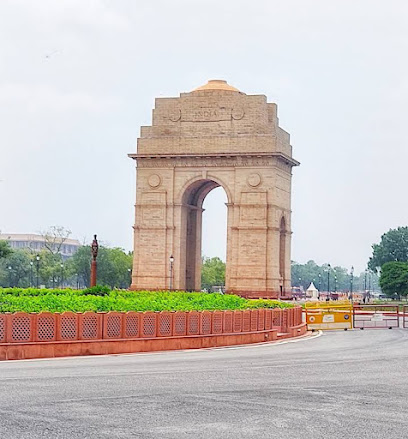
Red Fort
Discover the architectural splendor of the Red Fort in Delhi, a UNESCO World Heritage Site showcasing Mughal heritage and history.
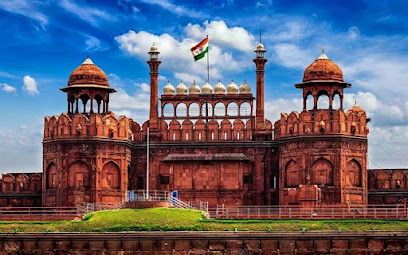
Humayun’s Tomb
Explore the architectural marvel of Humayun's Tomb, a UNESCO World Heritage Site, and discover the rich history of the Mughal Empire.
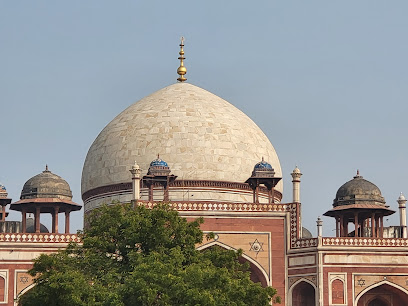
Jantar Mantar
Explore the wonders of Jantar Mantar, an astronomical observatory blending science and history in the heart of New Delhi.
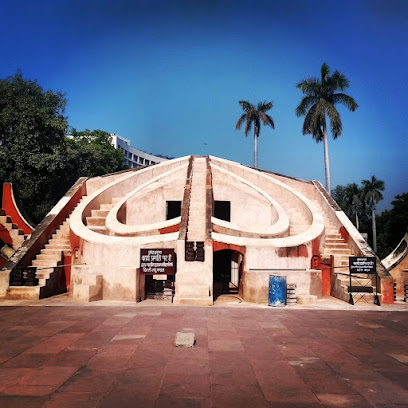
Purana Quila
Explore the grandeur of Purana Quila, an ancient fortress in New Delhi, showcasing Mughal architecture and rich historical significance for every traveler.
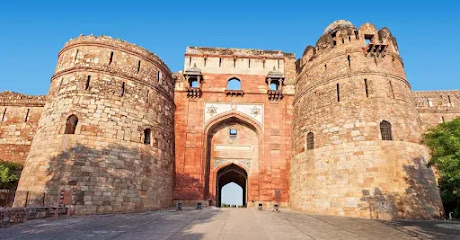
Safdarjung Tomb, Delhi
Explore the serene beauty and rich history of Safdarjung Tomb, a stunning example of Mughal architecture in the heart of Delhi.
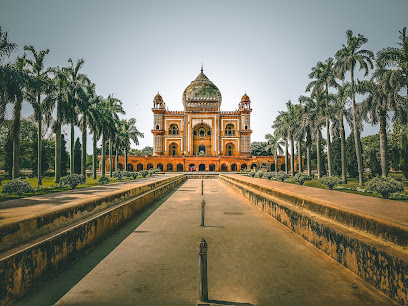
Tughlakabad Fort Delhi
Immerse yourself in the grandeur of Tughlakabad Fort, a historical gem in Delhi showcasing medieval architecture and rich heritage.
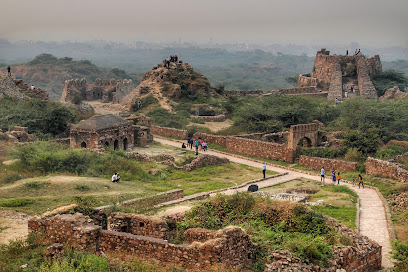
Bhool Bhulaiya
Uncover the mysteries of Bhool Bhulaiya, a historical landmark in New Delhi, where history and architecture intertwine in a mesmerizing labyrinth.
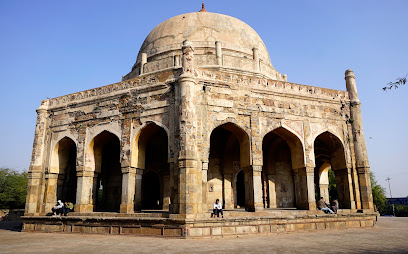
Hauz Khas Fort
Explore the enchanting Hauz Khas Fort, a historical gem in New Delhi, offering a blend of rich heritage and stunning natural beauty.
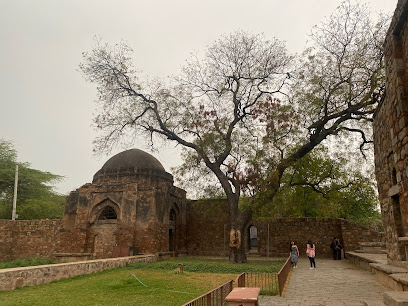
Sikandar Lodi Tomb, Delhi
Explore the serene beauty and historical significance of the Sikandar Lodi Tomb, a must-visit landmark in Delhi's enchanting Lodhi Gardens.
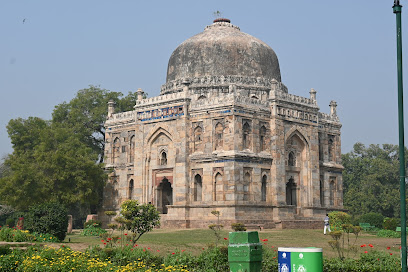
Isa Khan's Tomb, Delhi
Explore the serene beauty and rich history of Isa Khan's Tomb, a stunning Mughal architectural gem in New Delhi's Humayun's Tomb complex.
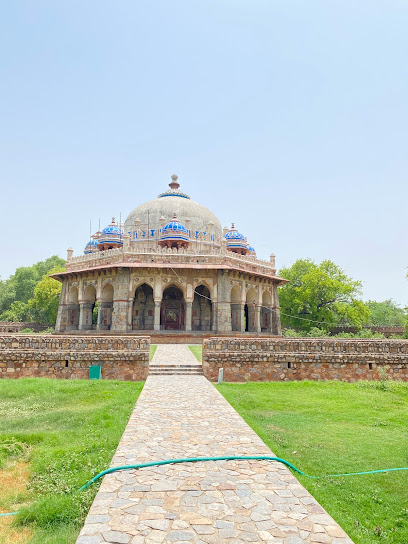
Mehrauli Archaeological Park
Discover the enchanting ruins and lush landscapes of Mehrauli Archaeological Park, where history and nature beautifully intertwine in New Delhi.
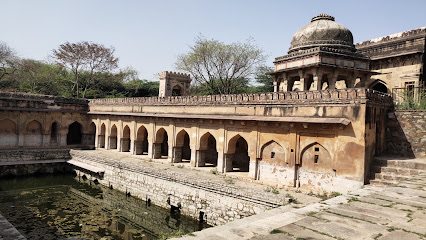
Jahaz Mahal, Delhi
Explore the architectural beauty and rich heritage of Jahaz Mahal, a stunning historical gem in Delhi's Mehrauli area.
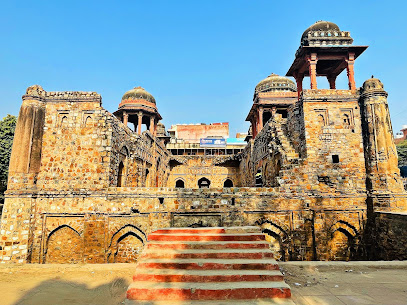
Bhuli Bhatiyari Ka Mahal
Explore Bhuli Bhatiyari Ka Mahal, a historical treasure in New Delhi, where Mughal architecture meets serene natural beauty, perfect for history lovers and adventurers.
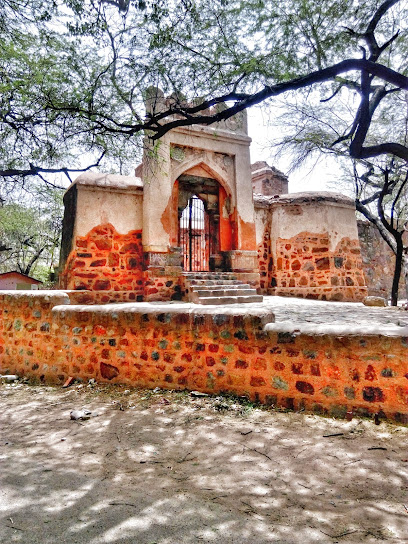
Alai Minar
Explore the architectural beauty and historical significance of Alai Minar in New Delhi, a stunning representation of Indo-Islamic artistry.
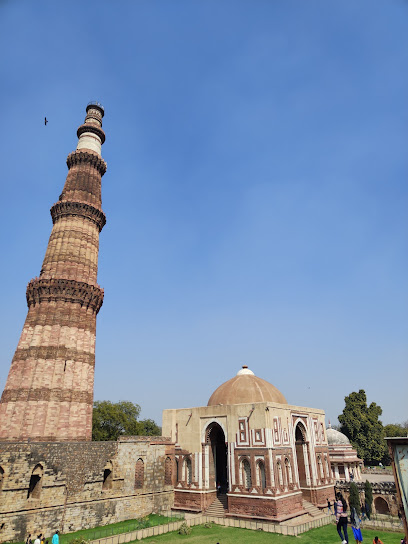
Unmissable attractions to see
Red Fort
Experience the grandeur of Mughal architecture at the Red Fort, a UNESCO World Heritage site in the heart of New Delhi, rich in history and culture.
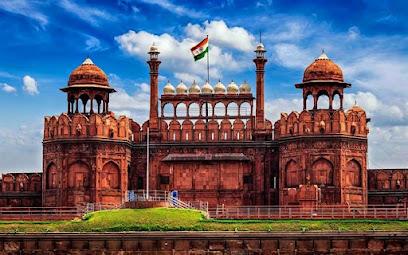
Gurdwara Bangla Sahib
Experience the serene beauty and rich heritage of Gurdwara Bangla Sahib, a must-visit Sikh temple in New Delhi's Connaught Place.
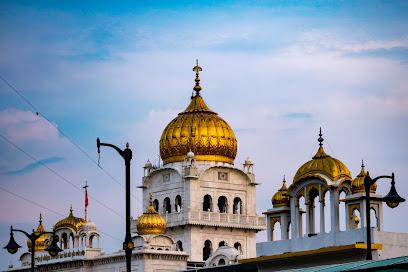
Gurudwara Sis Ganj Sahib
Explore the spiritual heart of Delhi at Gurudwara Sis Ganj Sahib, a historic Sikh temple offering peace, community, and rich cultural heritage.
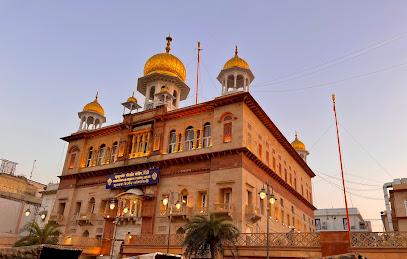
Jama Masjid
Explore the architectural beauty and spiritual significance of Jama Masjid, one of India's largest mosques, in the heart of Old Delhi.

Lodhi Garden
Discover the beauty and tranquility of Lodhi Garden, a historical oasis in the heart of New Delhi, where nature and Mughal architecture unite.
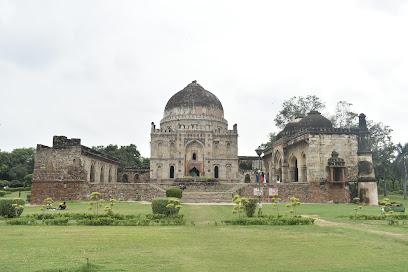
Akshardham
Discover the spiritual and architectural wonder of Akshardham, a magnificent Hindu temple complex in New Delhi, showcasing India's rich cultural heritage.

Humayun’s Tomb
Discover the elegance of Mughal architecture at Humayun's Tomb, a UNESCO World Heritage Site in New Delhi, surrounded by serene gardens and rich history.
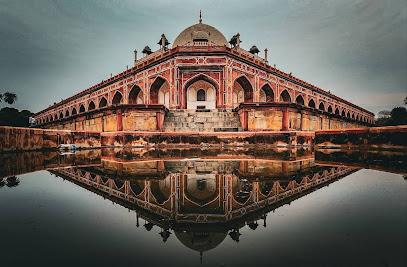
National Zoological Park
Explore the National Zoological Park in New Delhi: A wildlife haven with over 1,500 animals and engaging exhibits in a lush, serene environment.
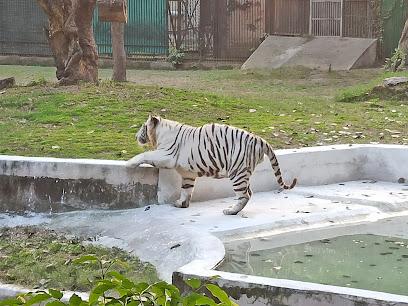
Jhandewala Devi Mandir, Karol Bagh
Discover the spiritual heart of New Delhi at Jhandewala Devi Mandir, a stunning Hindu temple brimming with culture and devotion.
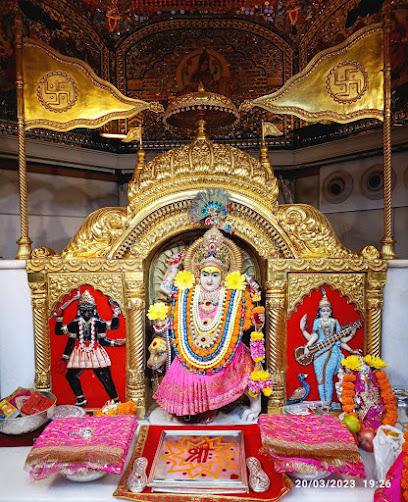
ISKCON Temple, East of Kailash
Experience the divine at the ISKCON Temple in New Delhi, a spiritual haven with breathtaking architecture, rich culture, and vibrant devotion.

Rajghat Memorial
Visit Rajghat Memorial in Delhi, a serene tribute to Mahatma Gandhi, where history, peace, and reflection come together in a beautifully landscaped setting.
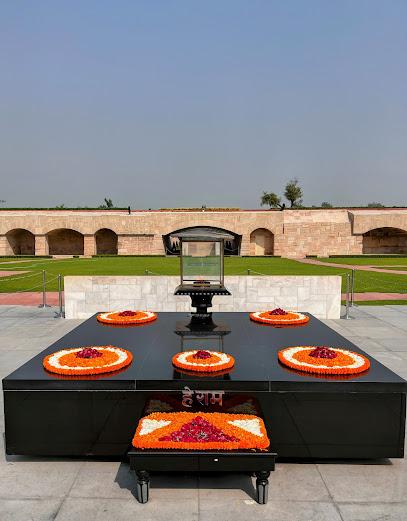
Jantar Mantar
Discover the celestial wonders at Jantar Mantar, an architectural marvel and UNESCO World Heritage site in the heart of New Delhi.

Purana Quila
Experience the grandeur of Purana Quila, an ancient fortress in New Delhi, where history and beauty intertwine amidst stunning architecture.
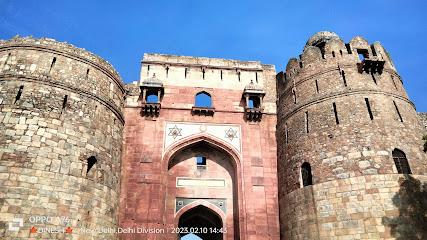
Jawaharlal Nehru Stadium
Explore the heart of Indian sports at Jawaharlal Nehru Stadium, a premier venue for cricket and cultural events in New Delhi.
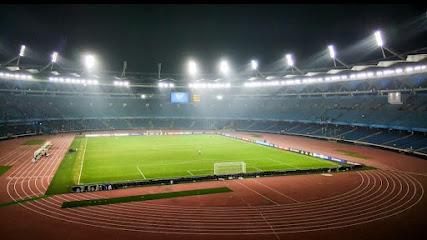
Central Park
Discover the serenity of Central Park in Connaught Place, New Delhi - a lush escape in the heart of the city, rich in history and culture.
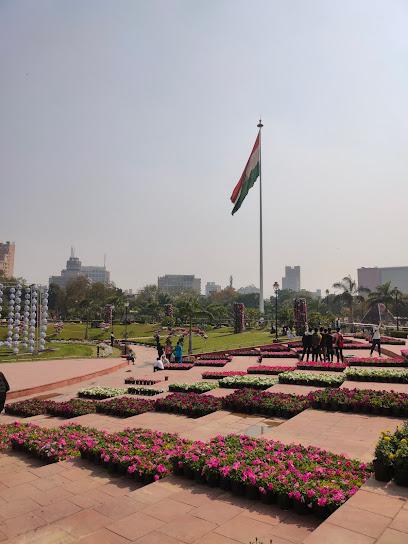
Essential places to dine
38 Barracks Restaurant and Bar
Savor diverse cuisines and enjoy live music at 38 Barracks Restaurant and Bar in New Delhi's bustling Connaught Place.
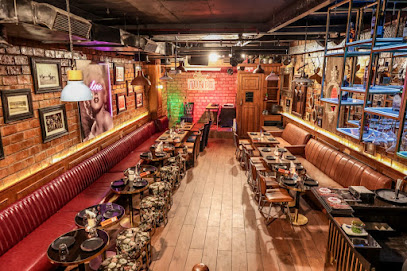
The GT Road
Experience the rich flavors of Mughlai and North Indian cuisine at The GT Road—where every meal is a celebration.
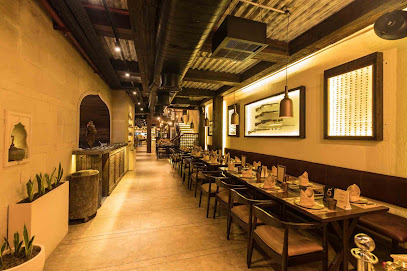
Dramz Delhi
Experience luxury dining at Dramz Delhi, where exquisite cuisine meets breathtaking views of Qutub Minar.
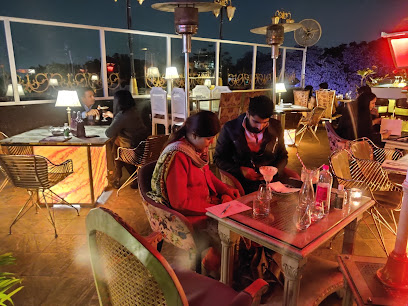
Parikrama The Revolving Restaurant
Experience fine dining like never before at Parikrama The Revolving Restaurant in New Delhi—where exquisite cuisine meets stunning city views.
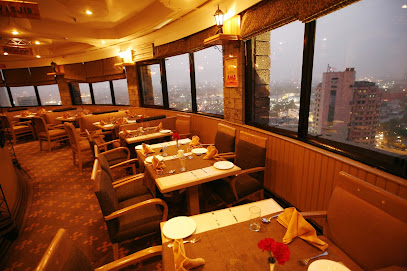
Olive Bar & Kitchen
Experience exquisite European cuisine at Olive Bar & Kitchen in Mehrauli, New Delhi - where fine dining meets vibrant atmosphere.
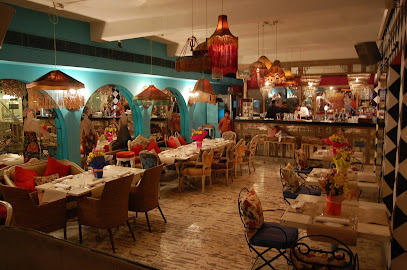
Delhi 'O' Delhi
Experience the vibrant flavors of India at Delhi 'O' Delhi - A premier buffet destination in New Delhi's India Habitat Centre.
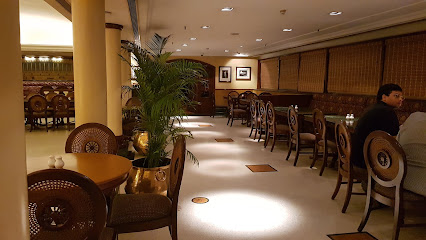
Farzi Cafe
Experience the fusion of traditional flavors and contemporary cuisine at Farzi Cafe in Connaught Place, New Delhi.
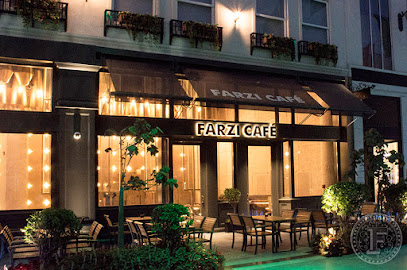
Indian Accent
Discover the exquisite fusion of traditional and contemporary flavors at Indian Accent in New Delhi's luxury setting.
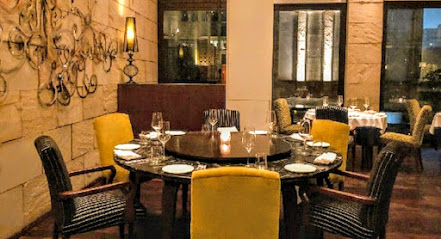
Jungle Jamboree
Discover Jungle Jamboree: A family-friendly buffet paradise serving Indian and Asian delicacies in a vibrant jungle-themed setting.
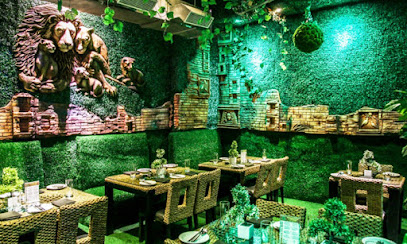
Bukhara
Discover Bukhara: An exquisite Indian dining experience nestled within ITC Maurya, offering authentic North Indian cuisine in a luxurious setting.
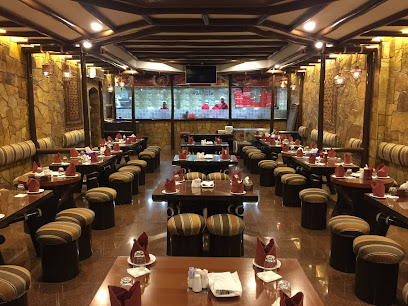
Garam Dharam
Experience the vibrant flavors of North India and China at Garam Dharam - a lively bar and restaurant in Connaught Place.
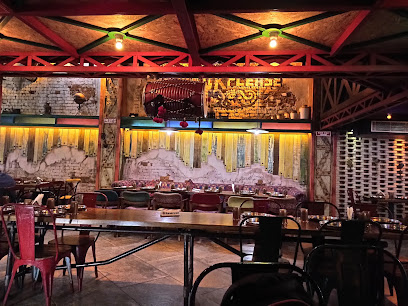
Food Bus Of India
Experience authentic Indian cuisine aboard a unique double-decker bus in the heart of New Delhi at Food Bus Of India.
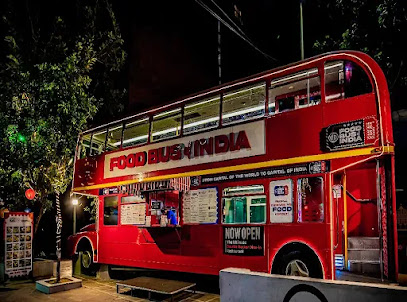
Tamra Restaurant
Experience an exquisite buffet at Tamra Restaurant in New Delhi, featuring diverse cuisines from Indian to Japanese amidst luxurious surroundings.
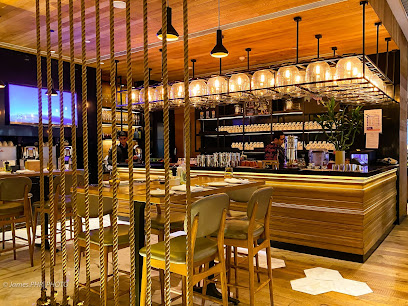
AnnaMaya FoodHall - Andaz Delhi
Experience culinary diversity at AnnaMaya FoodHall - where organic meets exquisite dining in New Delhi's vibrant Aerocity.
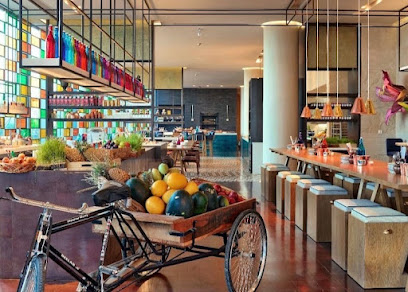
Veda Restaurant
Experience luxurious Indian dining at Veda Restaurant in Connaught Place, where Mughlai flavors come alive in an elegant setting.
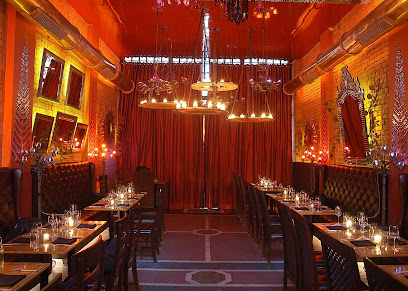
Markets, malls and hidden boutiques
Santushti Shopping Complex دلهي
Experience the charm of New Delhi at Santushti Shopping Complex, where luxury shopping meets local artistry and delightful dining.
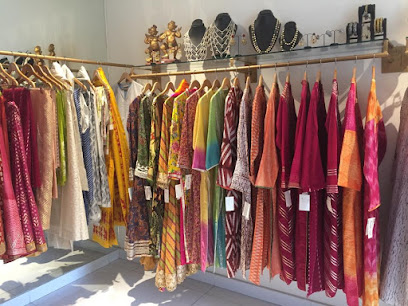
Pernia's Pop-Up Studio, Indian Handicrafts Emporium, New Delhi
Explore the best of Indian fashion at Pernia's Pop-Up Studio in New Delhi, featuring designer clothing, bridal wear, and exquisite handicrafts.
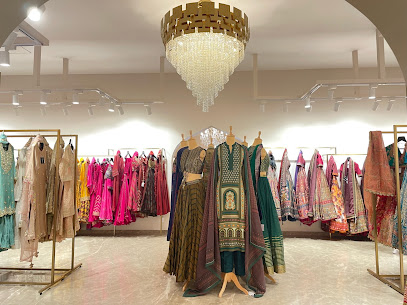
Delhi Emporium
Explore the cultural richness of India at Delhi Emporium, your go-to destination for authentic handicrafts and unique gifts.
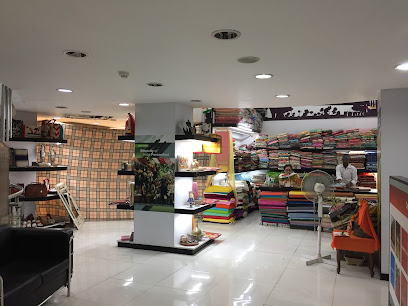
Pernia's Pop-Up Shop, DLF Emporio, Delhi
Discover the pinnacle of Indian fashion at Pernia's Pop-Up Shop in Delhi, a boutique known for luxury designer clothing, bridal wear, and exquisite accessories.

Shop with love
Discover unique fashion pieces at 'Shop with Love', a chic clothing store in Hauz Khas Village, New Delhi, blending tradition with modern style.
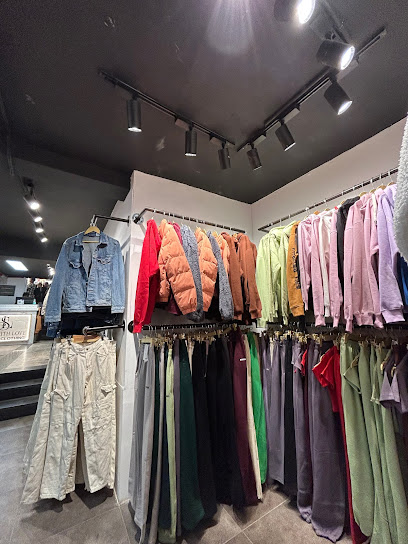
Jain Gift Emporium
Discover unique gifts and local treasures at Jain Gift Emporium in New Delhi – where tradition meets modern shopping.
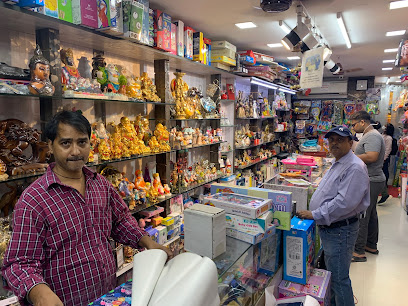
Exotic India - Home Decor Store
Explore the enchanting world of Exotic India, where traditional craftsmanship meets contemporary home decor in the heart of Delhi.

Madhatter Mystic with Lipstick
Explore Madhatter Mystic with Lipstick, a vibrant shopping mall in New Delhi, showcasing unique clothing, handicrafts, and exquisite jewelry.
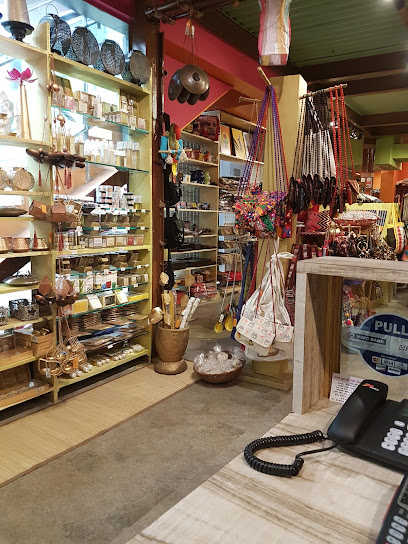
The Shop
Explore The Shop in New Delhi for a unique blend of contemporary and traditional fashion, perfect for stylish souvenirs and gifts.
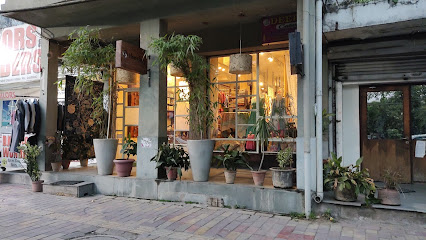
Unique Shopping World
Discover the latest in women's fashion at Unique Shopping World in Gurugram, where style meets affordability and variety.
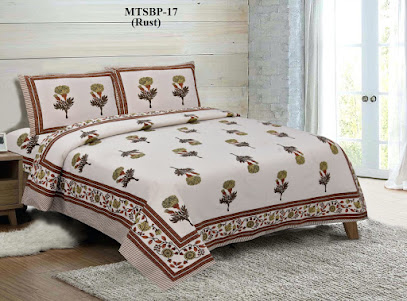
Indian Arts Palace
Explore Indian Arts Palace, a vibrant hub of art, antiques, and collectibles in Connaught Place, New Delhi, showcasing the richness of Indian craftsmanship.
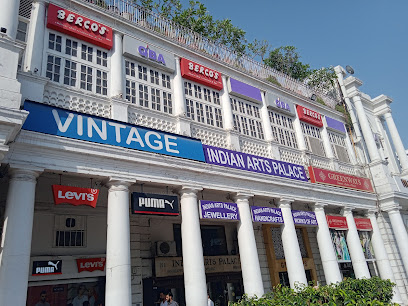
Unique Collections India Pvt. Ltd.
Discover a world of woodworking supplies and craftsmanship at Unique Collections India Pvt. Ltd. in New Delhi, perfect for enthusiasts and professionals alike.

Unique Gift Idea
Explore a treasure trove of unique gifts in Delhi, perfect for any occasion, from handcrafted items to quirky novelties.
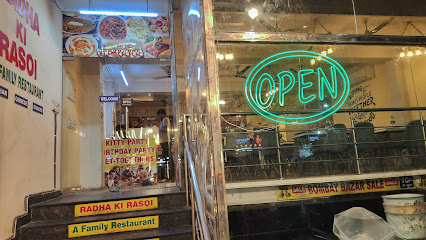
The Gift Shop
Discover unique souvenirs and traditional crafts at The Gift Shop in New Delhi's Malviya Nagar, the perfect place to find keepsakes that tell a story.
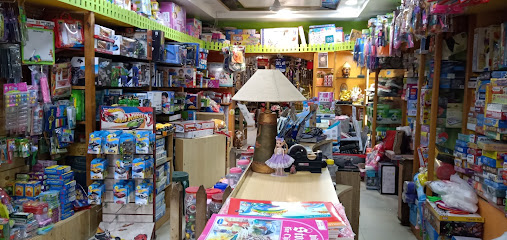
Unique Gift-N-Toys Gallery
Delve into a world of creativity and fun at Unique Gift-N-Toys Gallery, where every corner hides a delightful surprise waiting to be discovered.
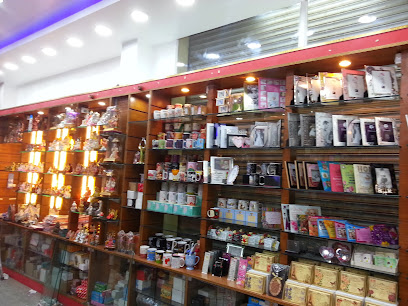
Essential bars & hidden hideouts
My Bar Headquarters
Discover the vibrant nightlife at My Bar Headquarters, a premium bar in Connaught Place offering an extensive drinks menu and a lively atmosphere.
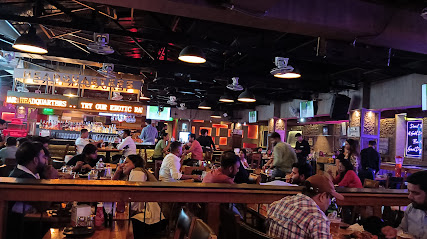
Lord of the Drinks
Discover the perfect blend of vibrant nightlife and exquisite dining at Lord of the Drinks, Connaught Place's premier lounge destination.
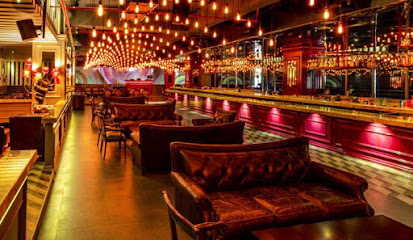
My Bar Square
Discover the vibrant flavors and lively atmosphere at My Bar Square in Connaught Place, New Delhi's top spot for food and nightlife.
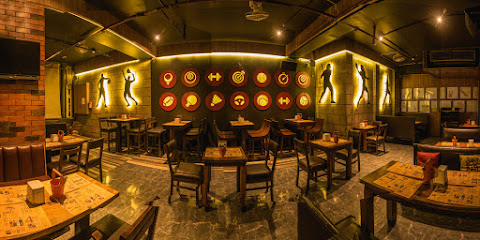
World of My Bar (My Bar Club)
Discover the vibrant nightlife of New Delhi at World of My Bar, your perfect destination for cocktails and great music in Connaught Place.
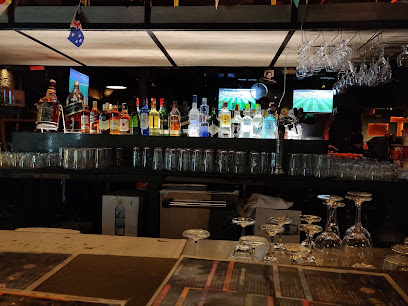
Excuse Me Boss
Discover Excuse Me Boss in Connaught Place, New Delhi - a lively pub with a diverse menu of Chinese, Continental, and North Indian cuisine.
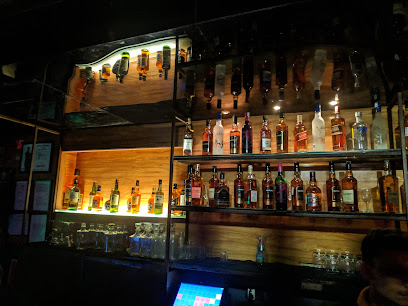
Monkey Bar
Experience the fusion of great food and innovative cocktails at Monkey Bar, a vibrant gastropub in Vasant Kunj, New Delhi.
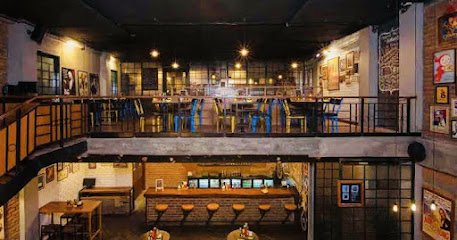
Only Bar Restaurant
Discover Only Bar Restaurant in New Delhi for a perfect blend of modern Indian flavors and a lively bar experience.
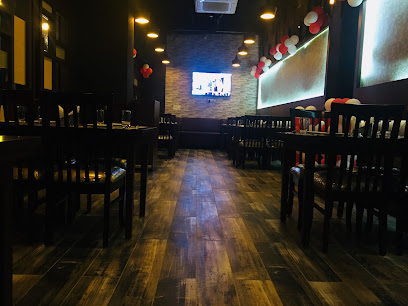
1 Oak
Experience a vibrant fusion of Chinese, Continental, and Italian cuisines at 1 Oak, a must-visit bar in New Delhi.
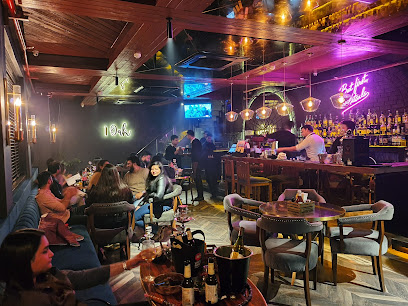
PCO Bar
Discover the chic ambiance and exquisite cocktails at PCO Bar, the premier nightlife destination in Vasant Vihar, New Delhi.
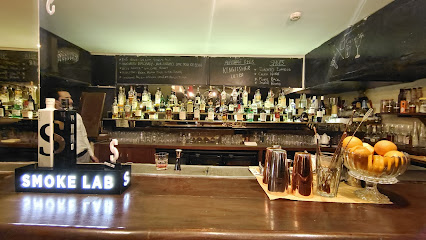
Perch Wine & Coffee Bar
Experience the perfect fusion of fine wines, gourmet coffee, and exquisite cuisine at Perch Wine & Coffee Bar in vibrant Khan Market, New Delhi.
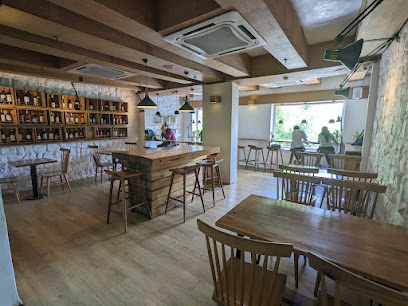
Judge and Jury- The best Cafe and Bar in Hudson Lane,Delhi
Experience the vibrant atmosphere and diverse menu at Judge and Jury, Delhi's top cafe and bar in Hudson Lane, perfect for food lovers and nightlife enthusiasts.
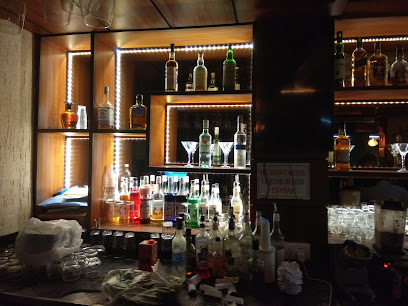
Studio XO Bar
Discover the lively fusion of music and cuisine at Studio XO Bar, a premier live music venue in New Delhi's vibrant nightlife scene.
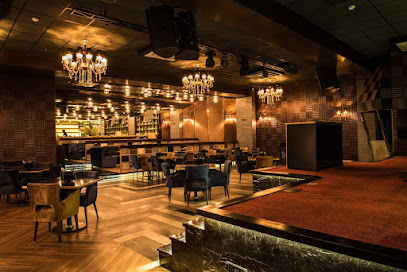
The Blue Bar
Experience luxury at The Blue Bar, a cocktail haven in Taj Palace, New Delhi, where exquisite drinks meet an elegant ambiance.
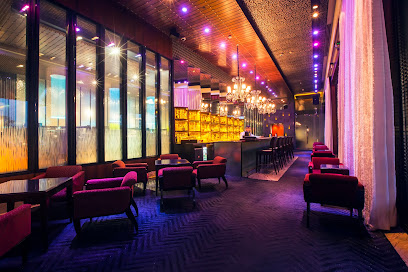
The Library Bar
Discover the elegance of The Library Bar at The Leela Palace, where exquisite drinks and gourmet cuisine meet luxury in New Delhi.
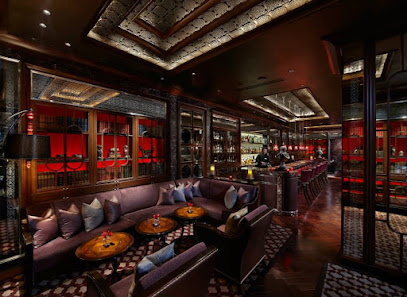
Rehab - Best Nightclub | Bar | Lounge | Dance Club In Hauz Khas Village Delhi
Experience the electrifying nightlife at Rehab, Hauz Khas Village's premier nightclub and lounge, with vibrant music, exquisite cocktails, and unforgettable vibes.
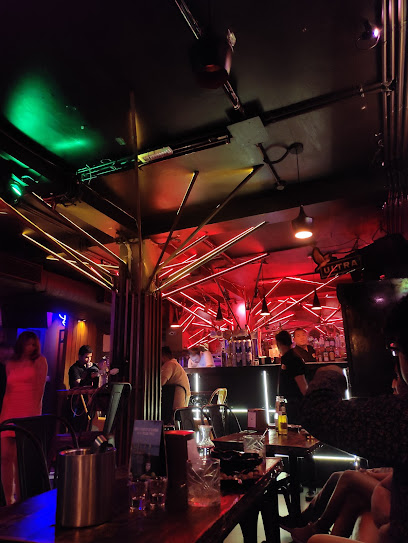
Local Phrases
-
- Helloनमस्ते
[Namaste] - Goodbyeअलविदा
[Alvida] - Yesहाँ
[Haan] - Noनहीं
[Nahi] - Please/You're welcomeकृपया
[Kripya] - Thank youधन्यवाद
[Dhanyavaad] - Excuse me/Sorryमाफ़ कीजिए
[Maaf kijiye] - How are you?आप कैसे हैं?
[Aap kaise hain?] - Fine. And you?ठीक हूँ। आप सुनाएं?
[Theek hoon. Aap sunaayen?] - Do you speak English?क्या आप अंग्रेज़ी बोलते हैं?
[Kya aap angrezi bolte hain?] - I don't understandमुझे समझ में नहीं आया
[Mujhe samajh mein nahi aaya]
- Helloनमस्ते
-
- I'd like to see the menu, pleaseमैं मेन्यू देखना चाहूँगा, कृपया
[Main menu dekhna chahunga, kripya] - I don't eat meatमैं मांस नहीं खाता
[Main maans nahi khaata] - Cheers!चियर्स!
[Cheers!] - I would like to pay, pleaseमैं चाहूंगा कि मैं भुगतान करूँ, कृपया
[Main chahunga ki main bhugtan karun, kripya]
- I'd like to see the menu, pleaseमैं मेन्यू देखना चाहूँगा, कृपया
-
- Help!बचाओ!
[Bachao!] - Go away!चले जाओ!
[Chale jao!] - Call the Police!पुलिस को बुलाओ!
[Police ko bulaao!] - Call a doctor!डॉक्टर को बुलाओ!
[Doctor ko bulaao!] - I'm lostमैं खो गया हूँ
[Main kho gaya hoon] - I'm illमुझे बीमारी है
[Mujhe bimari hai]
- Help!बचाओ!
-
- I'd like to buy...मैं खरीदना चाहूँगा...
[Main khareedna chahunga...] - I'm just lookingमैं बस देख रहा हूँ
[Main bas dekh raha hoon] - How much is it?यह कितने का है?
[Yeh kitne ka hai?] - That's too expensiveयह बहुत महंगा है
[Yeh bahut mahnga hai] - Can you lower the price?क्या आप कीमत कम कर सकते हैं?
[Kya aap kimat kam kar sakte hain?]
- I'd like to buy...मैं खरीदना चाहूँगा...
-
- What time is it?अभी क्या समय है?
[Abhi kya samay hai?] - It's one o'clockएक बजे हैं
[Ek baje hain] - Half past (10)दस बजकर पंद्रह मिनट हैं
[Das bajkar pandrah minute hain] - Morningसुबह
[Subah] - Afternoonदोपहर
[Dopahar] - Eveningशाम
[Shaam] - Yesterdayकल
[Kal] - Todayआज
[Aaj] - Tomorrowकल
[Kal] - 1एक
[Ek] - 2दो
[Do] - 3तीन
[Teen] - 4चार
[Char] - 5पाँच
[Paanch] - 6छह
[Chhah] - 7सात
[Saath] - 8आठ
[Aath] - 9नौ
[Nau] - 10दस
[Das]
- What time is it?अभी क्या समय है?
-
- Where's a/the...?...कहाँ है?
[...kahan hai?] - What's the address?पता क्या है?
[Pata kya hai?] - Can you show me (on the map)?क्या आप मुझे दिखा सकते हैं (नक्शे पर)?
[Kya aap mujhe dikhha sakte hain (naksha par)?] - When's the next (bus)?अगली (बस) कब है?
[Agli (bus) kab hai?] - A ticket (to ....)एक टिकट (.... के लिए)
[Ek ticket (.... ke liye)]
- Where's a/the...?...कहाँ है?
History of Delhi
-
Delhi traces its origins back to the epic tales of Mahabharata, where it was known as Indraprastha. Established around 1450 BCE by the Pandavas, this ancient city is believed to have been a thriving center of civilization with advanced urban planning and architecture.
-
Established in 1206, the Delhi Sultanate marked the beginning of Muslim rule in India. Qutb-ud-din Aibak, the first Sultan, initiated the construction of the Qutb Minar, which remains a significant historical monument. The Sultanate period saw the rise of Indo-Islamic architecture and the establishment of Delhi as a major political and cultural hub.
-
The Mughal Empire, beginning with Babur in 1526, transformed Delhi into a grand imperial city. Shah Jahan, one of the prominent Mughal emperors, founded Shahjahanabad in 1639, which is today known as Old Delhi. The Red Fort and Jama Masjid are remarkable architectural achievements from this period, reflecting the zenith of Mughal architecture.
-
The British East India Company seized control of Delhi after the defeat of the Marathas in 1803. The city became the capital of British India in 1911, and Edwin Lutyens and Herbert Baker were commissioned to design New Delhi. This period saw the blend of British and Indian architectural styles, culminating in landmarks such as Rashtrapati Bhavan and India Gate.
-
Delhi played a pivotal role in the Indian independence movement, with key events such as the Quit India Movement and the visit of Mahatma Gandhi. After India gained independence in 1947, Delhi became the capital of the newly formed Republic of India. The city witnessed significant demographic changes due to the Partition, with a massive influx of refugees from Pakistan.
-
Modern Delhi is a bustling metropolis that seamlessly blends its rich historical past with contemporary urban development. The city is a melting pot of cultures, languages, and traditions, with landmarks like the Lotus Temple, Akshardham Temple, and the bustling markets of Chandni Chowk and Connaught Place reflecting its diverse and vibrant character.
Delhi Essentials
-
Delhi is served by the Indira Gandhi International Airport (DEL), one of the busiest airports in India. It connects Delhi to major international and domestic destinations. The airport is approximately 16 kilometers from the city center. You can reach the city via pre-paid taxis, app-based cabs like Uber and Ola, or the Delhi Airport Metro Express line which connects to the New Delhi Metro Station.
-
Delhi has a comprehensive public transportation system that includes the Delhi Metro, buses, auto-rickshaws, and app-based cabs. The Delhi Metro is the fastest and most efficient way to travel across the city, covering all major areas. Buses operated by the Delhi Transport Corporation (DTC) and private operators are also widely used. Auto-rickshaws are a convenient option for short distances, but ensure the driver uses the meter or agree on a fare beforehand. App-based cabs like Uber and Ola are also readily available.
-
The official currency in Delhi is the Indian Rupee (INR). Credit and debit cards are widely accepted in hotels, restaurants, and shops. However, it is advisable to carry some cash for small purchases, especially in local markets and smaller establishments. ATMs are widely available throughout the city. Currency exchange services are available at the airport, major hotels, and authorized exchange centers.
-
Delhi is generally safe for tourists, but it is important to take standard precautions. Avoid isolated areas and poorly lit streets at night. Be cautious with your belongings in crowded places like markets and public transport. Areas like Paharganj and certain parts of Old Delhi have higher incidences of petty crimes targeting tourists, so stay vigilant in these areas. Always use registered taxis and avoid sharing personal information with strangers.
-
In case of emergency, dial 100 for police assistance, 101 for fire services, and 102 for medical emergencies. Major hospitals like AIIMS, Fortis, and Apollo have emergency services. It is advisable to have travel insurance that covers medical emergencies. Pharmacies are widely available for minor health issues. The tourist helpline number is 1363, which can assist with a range of issues, including language translation and emergency assistance.
-
Fashion: Do dress modestly, especially when visiting religious sites. Avoid wearing revealing clothing. Religion: Do respect local customs and traditions. Remove your shoes when entering temples and cover your head if required. Public Transport: Do be respectful and offer your seat to elderly or disabled passengers. Don't eat or drink on the Delhi Metro. Greetings: Do greet people with a 'Namaste' (palms pressed together) or a handshake. Eating & Drinking: Do try local street food but ensure it is from a hygienic source. Don't drink tap water; always opt for bottled water.
-
To experience Delhi like a local, visit bustling markets like Chandni Chowk and Dilli Haat. Enjoy a morning walk at Lodhi Gardens and visit historical sites like Humayun's Tomb and Qutub Minar. Take a rickshaw ride through the narrow lanes of Old Delhi. Attend a classical music or dance performance at the India Habitat Centre. For unique culinary experiences, explore the street food in areas like Karol Bagh and Paranthe Wali Gali. Engage with locals, as Delhiites are generally friendly and willing to share their culture and traditions.
Nearby Cities to Delhi
-
Things To Do in Rishikesh
-
Things To Do in Agra
-
Things To Do in Jaipur
-
Things To Do in Shimla
-
Things To Do in Gwalior
-
Things To Do in Ranthambore
-
Things To Do in Pushkar
-
Things To Do in Amritsar
-
Things To Do in Manali
-
Things To Do in Kanpur
-
Things To Do in Lahore
-
Things To Do in Lucknow
-
Things To Do in Gujranwala
-
Things To Do in Jodhpur
-
Things To Do in Sialkot





















